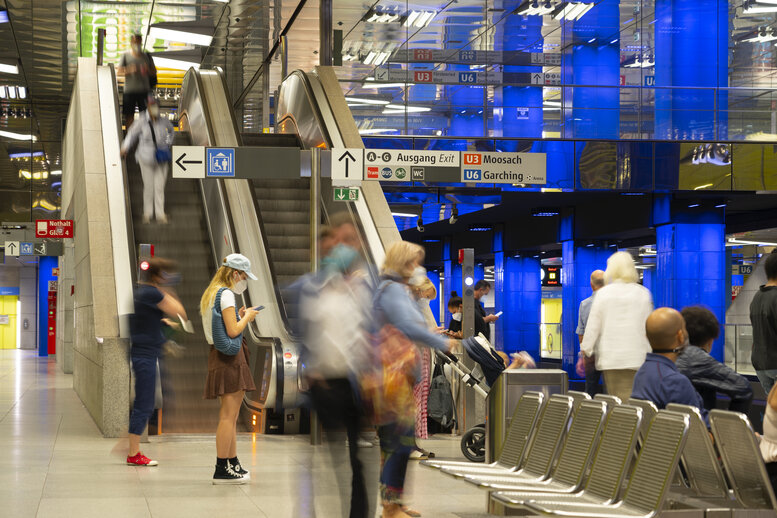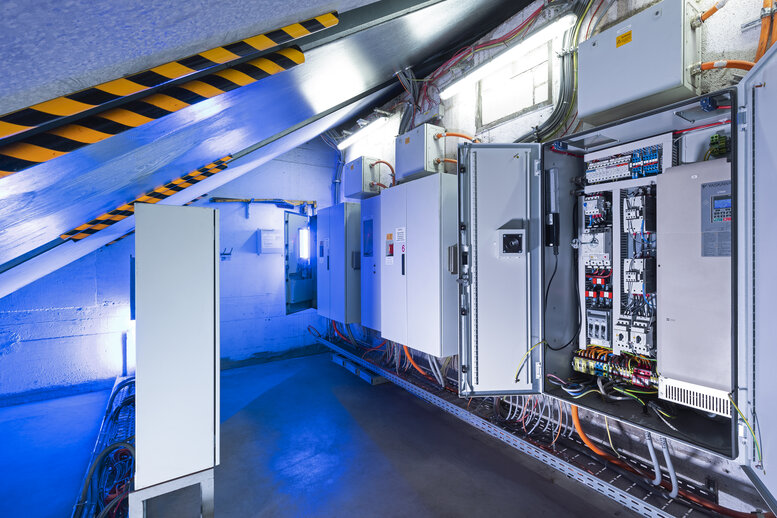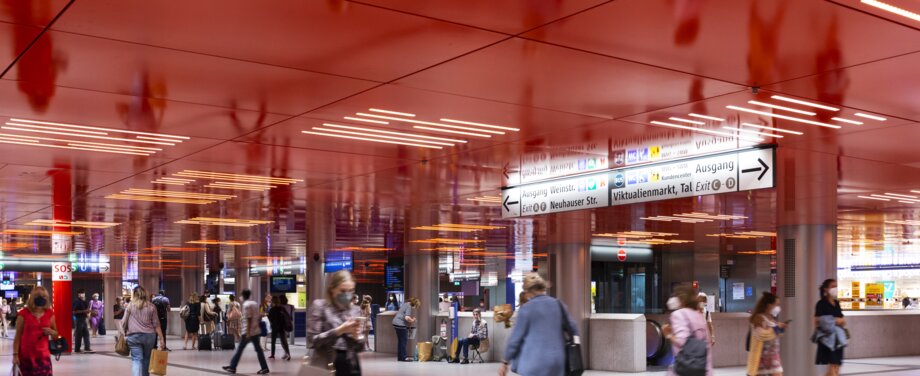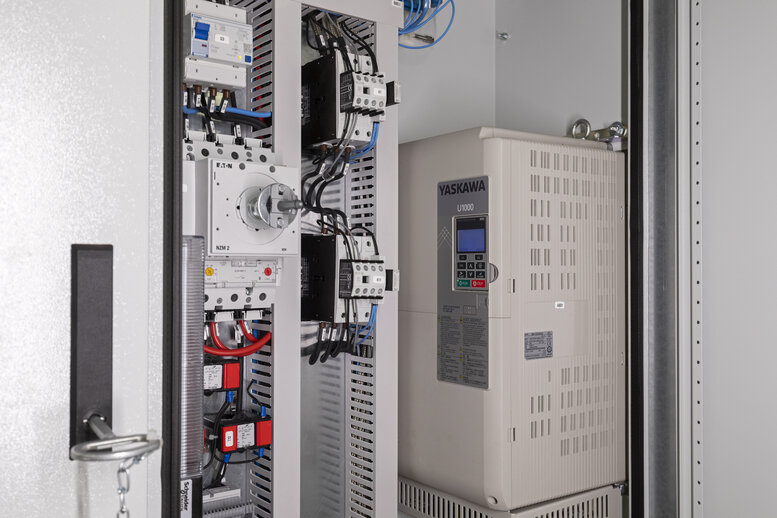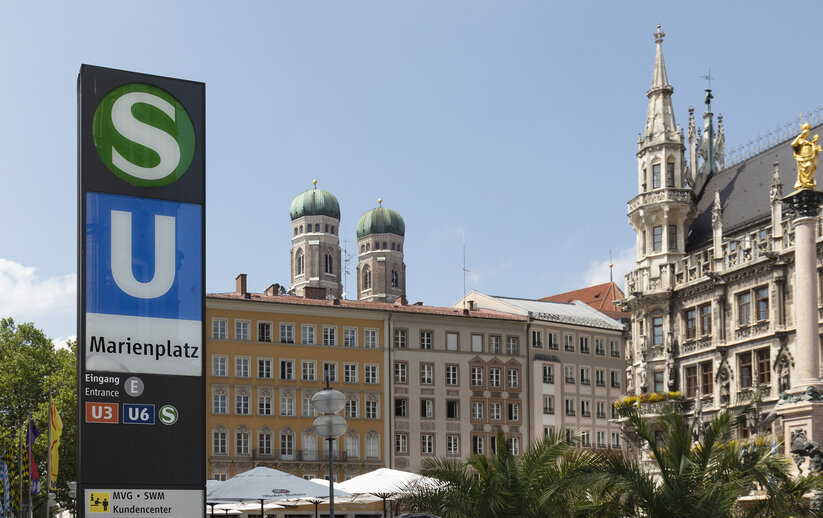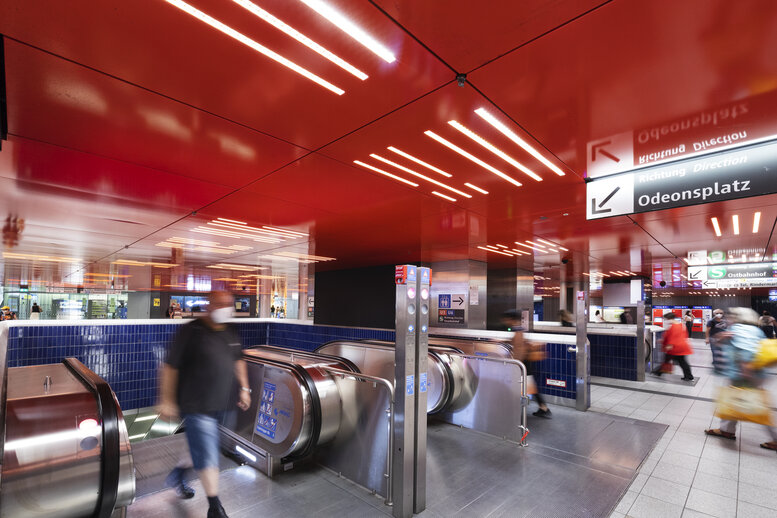Germany's biggest escalator operator embraces innovation
In the subway system of the Bavarian capital, Stadtwerke München (SWM) operates Germany's largest escalator network. On this scale, the impact of any technical innovations can be immense, which is why the technicians in charge take great care when making their decisions. Most recently, they have opted for the gradual deployment of Yaskawa's U1000 matrix converter.
"Simply mobile"
Under this motto, Münchner Verkehrsgesellschaft mbH (MVG), a subsidiary of Stadtwerke München GmbH (SWM), transports over half a billion people through the German metropolis every single year. On their travels, the passengers not only use trains and buses, but also around 770 escalators in subway and tram stations. This makes SWM and MVG the largest escalator operator in Germany.
A high level of reliability
Ably supported by his team, Mario Princip from MVG ensures that the systems operate round the clock and without interruption. "A high level of reliability is extremely important to us and is also strategically significant," explains the technical expert. "It is not just a question of addressing the passengers' needs for comfort and convenience, but it is also an important operational matter: Without escalators the passengers cannot enter and exit the stations at the required speeds."
In-house innovation
With exacting demands in terms of safety and availability and many hundreds of systems to look after, any technical change can bring with it significant costs or savings. As a result, escalator experts are meticulous in their assessment of new optimization opportunities. The result is an ongoing process of modernization in an environment that is highly resistant to standardization. After all, the service life of an escalator is around 30 years. At any one time, multiple generations and models from different manufacturers are in use across the network, while the individual spatial conditions are equally diverse. "In a nutshell, every system is unique," states Daniel Mayer, who is responsible for the electrotechnology of the escalators.
MVG tackles this tremendous challenge by drawing on its own powers of innovation. One current example is the manufacturer-independent escalator control system, which the company developed itself. This means that it can be maintained by in-house personnel, and faults can be rectified with greater speed. Costs for spare parts and conversions are also kept to a minimum. "Such innovations often come from Munich and we have already made a name for ourselves in this industry," proclaims Princip.
MVG has been using inverter drives since before the development of the new control system. The benefits they offer over conventional drives quickly become apparent in everyday operation: Most of the escalators only run when necessary and are activated by a light barrier. The inverter control enables variable start-up and stopping, which not only makes things more comfortable for the users but also protects the mechanisms.
Yet as impressed as the responsible parties at MVG are by these benefits during motorized operation, they have long been searching for a suitable solution for downward escalators. Many systems work with conventional braking resistors. The resulting waste heat has to be dissipated in a safe yet elaborate fashion, not least for fire safety reasons. The motor windings can also serve as "braking resistors" and convert energy into heat, but only to a limited extent and not on a continuous basis. It would also be possible to supplement an inverter drive with an additional regenerative unit, but this is not feasible in every case due to the limited space in the escalator control cabinets.
Eventually, the solution was found in the form a technology that is still rarely used in low-voltage applications: a matrix converter that combines the inverter and regenerative unit in a single device. In the spring of 2016, Mario Princip and his colleagues tested the capability of the few available, market-ready models using their own simulator.
A key, escalator-specific requirement was a flying restart function to ensure synchronized start-up after automatic deactivation. In addition, all electrical components have to be usable year round at outside temperatures. Yaskawa's newly developed U1000 was one of the components tested.
U1000 matrix converter
First introduced in 2014, the U1000 matrix converter from Yaskawa is a highly efficient, regenerative direct inverter for powering induction and permanent magnet machines with or without speed sensors. Numerous models are available to cover a wide power range from 2.2 to 500 kW. Thanks to its special topology, the U1000 is capable of direct regeneration and does not require any DC bus capacitors. No space is needed for an additional regenerative unit. Like all Yaskawa drives of the 1000 series, the U1000 is also designed for ten years of maintenance-free, continuous operation.
The regenerative energy that is fed back into the system is available to other consumers in the building, such as the lighting, meaning that it does not have to be drawn from the power grid. However, this was not the main argument that prompted MVG to subject the U1000 matrix converter to rigorous testing under real-life conditions as part of a pilot installation.
Application-specific arguments
Of greater significance was the fact that the U1000 rendered regenerative resistors unnecessary, thus greatly simplifying the cooling or ventilation of the system, or removing the need for it altogether. Another advantage of the Yaskawa system was the upkeep of the grid quality during regeneration: The line currents during operation of the U1000 are nearly sinusoidal, both in motor and regenerative mode, and harmonics are reduced to a minimum. On the one hand, this reduces losses in network components, such as transformers or cables and lines, thereby increasing the efficiency of the system as a whole. On the other hand, potential interference with other system components is decreased significantly. This in turn prevents failures and, subsequently, the complicated procedures and unavoidable downtimes associated with identifying the cause.
The U1000 already features an integrated EMC filter, thereby removing the need for external components that would otherwise be required, such as DC reactors or LC filters. Nevertheless, the space requirement is still up to 50% less than with conventional integrated solutions with sinusoidal input and regeneration. The matrix converter also features a built-in SIL3 STO input, thus allowing the high machine safety requirements to be met easily and with minimal components. Option boards are available for all common fieldbuses. This makes the connection to EtherCAT, Powerlink, Profinet, Profibus, Ethernet IP and other systems extremely straightforward.
Initial practical experience and outlook
Following the positive results on the simulator, MVG has been testing the U1000 in the field since the spring of 2016, specifically in an escalator at the Fraunhoferstrasse subway station. This location was ultimately chosen due to the typical spatial conditions in the control cabinet, meaning that space is very limited indeed. The U1000 was therefore duct-mounted on the side wall of the control cabinet such that the cooling module is on the outside. The device is connected to the MVG control system, meaning that the current operation status can be monitored in real time. Moreover, reliable test data is available at all times.
Based on initial empirical results, Mario Princip is very happy with the solution: "We've addressed the main issues and the U1000 is working just as it should!" As a result, all suitable escalators are now gradually being equipped with Yaskawa matrix converters. In addition, the model is now included in all regular re-tendering.




















